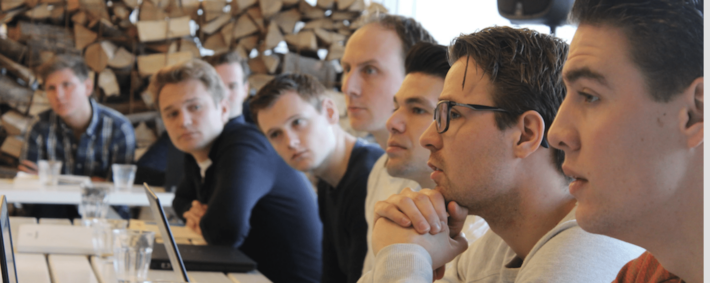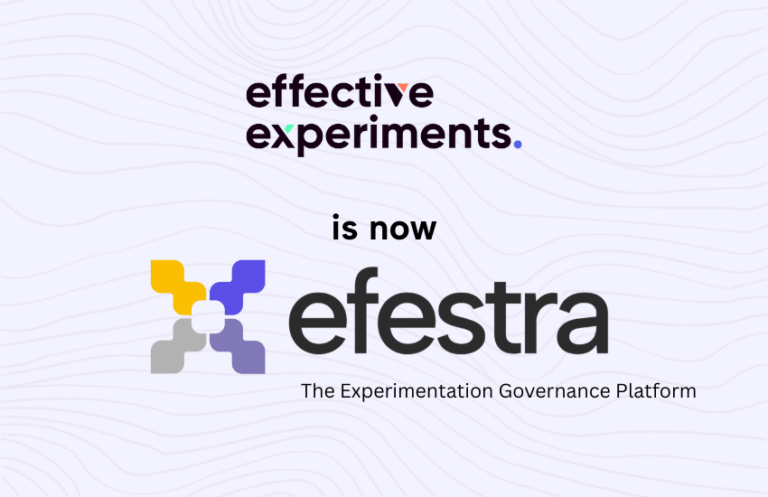Are you in a small CRO team and lacking conversion optimization strategy buy-in at the senior level of your business?
Businesses like Skyscanner, Booking.com, and Shop Direct are benefitting from a deeply ingrained experimentation culture. Meanwhile, only 22% of businesses are satisfied with their conversion rates and for every $92 spent acquiring customers, only $1 is spent converting them (Econsultancy, 2016).
CRO is still often seen as a tactical bolt-on by senior leadership that lacks strategic thinking. As a relatively new field, conversion optimization strategy lacks influence in the upper echelons of an organization, and this is blocking businesses from building a successful experimentation culture like Skyscanner, Booking.com, and Shop Direct.
So as part of a small CRO team, how do you create this senior buy-in and become a driver behind building an experimentation culture in your business?
The important thing is to remember buy-in takes time. Don’t go for the jugular straight from the beginning; you need to build-up from a small start, and likely, you’ll need to make sure your plan retro-fits onto the structure of your business.
Here are some key areas to focus on as you look to build an experimentation culture in your business and build influence with senior management.
Speak their commercial language
To begin with, it’s important to understand that the main language your senior management speak is a commercial language. The things that get their attention will be things that have an impact on revenue or ROI.
This is going to take some research and investment on your part at the beginning. The more questions you can answer before they’re even asked, the better.
Come prepared with case studies and hard data. If you can do some tests on your own before meeting with management to demonstrate the power of CRO on revenue, great, but if you can’t, you’ll want to focus on showing stakeholders several things:
- The gaps and opportunities on the website.
- The potential results of CRO and the ROI, especially in terms of revenue .
- How much is being invested in driving traffic vs converting it .
- How being customer-centric benefits the company and brand broadly.
- How an experimentation culture works for other companies and the impact it’s had on their growth.
Overall, focus on putting together a persuasive commercial case of the results they can expect if a broader experimentation culture and conversion optimization strategy is adopted by the business and more is invested in testing.
Find a senior-level sponsor
You’re highly unlikely to get broad senior management buy-in straight away, so it’s worth trying to pick a senior manager who you think is most amenable to adopting conversion optimization strategy. Picking a HiPPO leader is not the way forward. Focus on senior managers who:
- Take a data-driven approach .
- Love to innovate and experiment .
- Have a budget.
Take time to understand their challenges and make suggestions for what they can test to solve the biggest challenges they personally face. Design and implement some tests to build a proof of concept for other teams.
Go for easy, simple tests that get big results right away and reach statistical significance quickly. This makes it easier to sell experimentation through the business rapidly.
Once you’ve delivered, ask them to advocate in senior management about the impact it’s had for their team. Rinse and repeat until you have enough advocates at a senior-level that you can no longer be ignored.
Push for a culture where failure is okay
So you have the attention of senior management. Now it’s time to start taking bigger steps.
The first big shift is a cultural one. The only way to really reinforce the new order of things is to ensure management encourages efficiency, productivity, and adaptability from their employees.
(Whether or not you offer financial rewards, promotions, etc., will vary across businesses, but know that competition often leads to the creation of silos, which we’ll discuss in a minute.)
The most important part is to create a culture where failure is okay. It shouldn’t be punished, it should be rewarded.
Facebook had a mantra: “Move fast and break things.” Really, what this meant was that their policy was to test iteratively and if they failed, at least they learned something valuable as they moved forward.
The real risk is finding out what works, but too late. Evangelize this mantra by highlighting the success of companies like Skyscanner and Airbnb, or other similar companies.
The key here is to get leadership release ego-driven decision making and move towards value data-driven decision making, even if it goes against their experience. Teams reflect their leaders’ behavior, so this needs to come from the top.
Make it easy by building the process
People are busy and experimentation and conversion optimization strategy can sound like hard work, it doesn’t have to be difficult though.
An experimentation culture is really about looking for answers to questions; your goal at the start of the process is to make it easy for teams to surface their biggest questions that need testing. Tools can make life easier here, but the really important thing is to make it quick and easy for teams to share their burning questions.
In the beginning, you will need to do a lot of the heavy lifting implementing tests once the biggest challenges have been identified until the results speak for themselves and you can begin to democratize a lot more.
The scientific method is a great place to start with designing a scalable process:
Make sure this process is repeatable for multiple experiments and work out how you can make it as easy and lean as possible as you iterate.
Beware of silos
Silos tend to be created by misaligned goals from leadership, and they will destroy a culture of experimentation and conversion optimization strategy as you will struggle to gain buy-in across the business.
Silo mentality often comes down to leaders, who are creating the goals and priorities for their teams. If team leads experience conflict, this us-against-them mentality can trickle down to their team.
Creating cross-functional goals or teams can remove these barriers. If you have a designer, digital marketer, and engineer all working together to solve a problem, you remove the silos that can be created further up the chain.
If you can’t implement this full-time, then having an innovation week where cross-functional teams unite to solve and experiment with a specific problem can begin to highlight the power of this cross-functional thinking.
Involve the team in your conversion optimization strategy
Leaders aren’t the only people you’ll need to convince.
As Nick So, WiderFunnel’s Director of Strategy, says:
“Besides the obvious senior leadership and key decision-makers as you mention, we find getting buy-in from related departments like branding, marketing, design, copywriters and content managers, etc., can be very helpful.
Having these teams on board can not only help with the overall approval process but also helps ensure winning tests and strategies are aligned with your overall business and marketing strategy.
You should also consider involving more tangentially-related teams like customer support. This makes them a part of the process and testing culture, but your customer-facing teams can also be a great source for business insights and test ideas as well!”
Make sure to evangelize across the board. The more pressure on management to adopt an experimentation culture and conversion optimization strategy, the better. A crowd is often better than one lone voice.
Takeaways
The key steps to building an experimentation culture and gaining senior-level buy-in is to:
- Speak leaderships commercial language.
- Find an executive sponsor.
- Create a culture where failure is okay.
- Build a quick and easy process for repeatable testing across teams.
- Run some quick-win tests as a proof of concept with an emphasis on the learnings from the test. (The risk here is showing winners too early and too often, which will prime them to expect that.)
- Beware of silos and break them through cross-functional teams.
- Always be evangelizing across teams.
Remember change takes time, particularly in business culture, so don’t expect overnight shifts play the long game.
Want to learn how to kick your CRO career into high gear? Join us at Experimentation Bootcamp.







